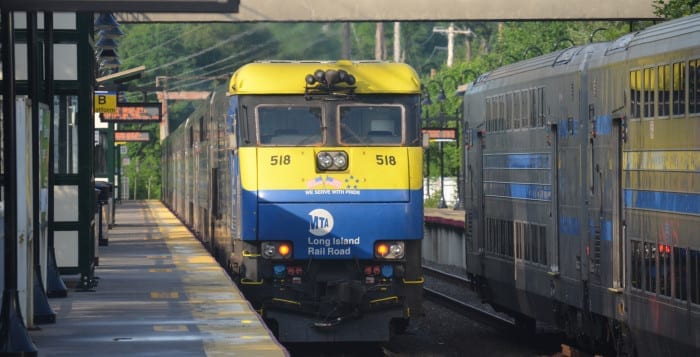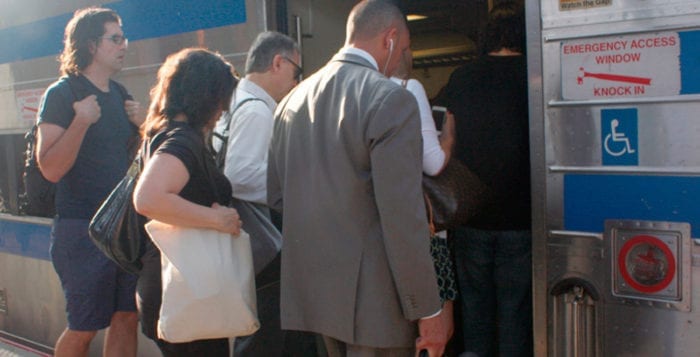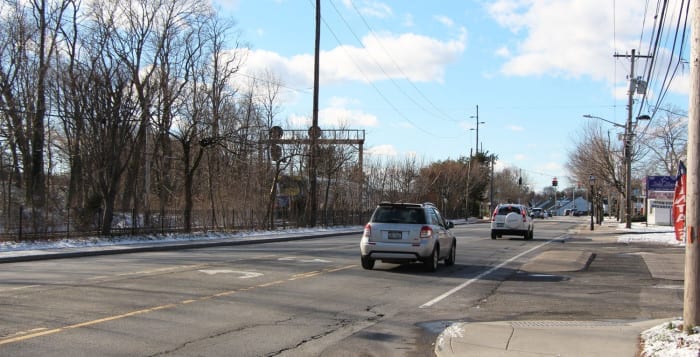A technological upgrade in Port Jefferson almost four decades in the making got a jolt of life this month.
The Port Jefferson Long Island Rail Road line was electrified as far east as Huntington in 1970, and despite calls ever since, electrification of the line further east to Port Jeff has yet to take place. State Sen. Ken LaValle (R-Port Jefferson) met with Metropolitan Transportation Authority board member Mitchell Pally during November, wherein the sides agreed to pursue a feasibility study to determine the potential cost and impact of electrifying the line out to Port Jeff. Trains used on the line east of Huntington currently run on diesel fuel.
“I believe it’s something we could get done,” LaValle said of electrification during a phone interview. “I think it’s critically important that we can demonstrate to communities with specificity where electric substations are going. Communities need to know that before we make that decision. I’m supporting electrification that starts in Port Jeff but also goes through Smithtown and Huntington.”
The feasibility study would be conducted by the LIRR and MTA, according to LaValle, and he said he’s not sure what the study would cost.
“Conducting a feasibility study makes a great deal of sense,” LIRR spokesperson Aaron Donovan said in a statement. “Additional electrification has long been part of the discussion for future improvements. We look forward to working with Senator LaValle about the possibility of obtaining funding for such a study.”

Calls and initiatives to electrify the line east of Huntington go back to at least the 1980s. According to an article by researcher Derek Stadler published by the Long Island History Journal in 2016 entitled “The Modernization of the Long Island Rail Road,” in 1984, electrification of the branch was included in a nearly $600 million MTA spending package that was meant to serve as a five-year plan for LIRR improvements. However, the plans were postponed indefinitely just two years later due to a budget gap.
The establishment of a one-seat ride from Port Jefferson to Penn Station has long been a goal for elected officials and LIRR riders as well, though that would require electrification as diesel engines cannot travel to the Manhattan station. In the mid-90s, a brief pilot program was tested on the Port Jeff line using dual-mode locomotive cars that could run using both diesel engines and third-rail electrification. According to Stadler’s research, in 2000 it was estimated that electrification east of Huntington could cost as much as $500 million.
Stadler said in an email he considered the feasibility study “a big step forward,” and said he’s optimistic it could get the ball rolling. However, he added the discussion has heated and cooled in the past as well.
Port Jefferson Village Mayor Margot Garant said during a Nov. 20 board of trustees meeting she and Deputy Mayor Larry LaPointe recently met with LaValle, and the topic of electrification of the Port Jeff line came up as well.
“It would be critical to electrify the North Shore line,” Garant said during the meeting. The village is in the process of examining transportation improvements that could among other benefits, increase LIRR ridership and better coordinate the schedules of the railroad, Suffolk County buses and the Bridgeport-Port Jefferson ferry.
LaValle said the process of obtaining money to actually complete the electrification work wouldn’t be done prior to the feasibility study, though he said he believes funding could be attainable.
“We want to move people as quickly as possible east to west and build the same rate of success as Ronkonkoma is enjoying in terms of availability of trains into not only New York City, but west,” he said. “Before we do that we need to know with specificity — communities need to know what it means for their community.”
The state senator also mentioned discussions with the MTA concerning the possible usage of Lawrence Aviation Industries Superfund site in Port Jefferson Station as a possible LIRR rail yard.
Both LaValle and Donovan declined to share specifics about the timetable of a feasibility study.







